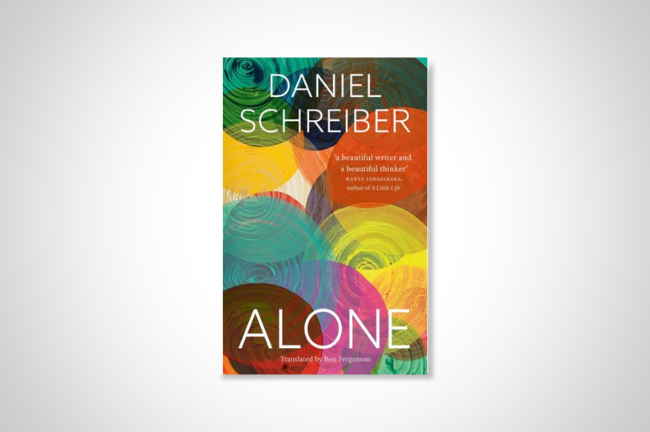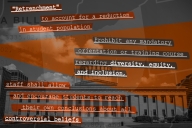You have /5 articles left.
Sign up for a free account or log in.

Reaktion Books
In May, the U.S. surgeon general issued an advisory report, “Our Epidemic of Loneliness and Isolation,” making a case for social atomization as a public health issue. It acknowledges a long-term increase in the number of Americans living alone—the percentage of single-person households rose from 13 percent in 1960 to 29 percent in 2022—but placed more emphasis on an assortment of recent indicators that suggest shrinking and fraying social bonds.
In 1990, 27 percent of Americans surveyed reported having three or fewer close friends. By 2021, it was up to 49 percent. Between 2003 and 2020, the average amount of time spent socially engaged with friends (whatever their quantity or degree of closeness) fell by 20 hours per month; the decline was especially steep for people between ages 15 and 24. The surgeon general did not venture any predictions about how the aging of the population might influence such trends, or vice versa. But news from the frontier between robotics and gerontology suggests that help—of a sort—is on the way.
Last month, researchers from Cornell University, Duke University and the University of Auckland announced that AI-enhanced robot companions show great promise in mitigating elderly people’s sense of isolation. Benefits for their overall health and well-being may follow. The “social robots” now under development are able not just to interact with humans but “to engage in more spontaneous conversations” than could earlier models. They can “even mimic the voices of old friends and loved ones who have passed away.” (The uncanny valley gets deeper all the time.)
Researchers are also working on a new metric, the Companion Robot Impact Scale, to quantify the benefits for seniors’ health and well-being. Whether CRIS will be used in-house or as a rating system for consumers is not clear. In any event, the most important number to keep in mind at this point is the 70 percent of doctors surveyed who thought companion robots should be covered by insurance.
Calling loneliness an epidemic now has more tangible connotations than it once might have. But as the German essayist and cultural critic Daniel Schreiber points out in his newly translated essay collection, Alone: Reflections on Solitary Living (Reaktion Books), a sort of rolling moral panic over the implications of living alone has been underway for quite a while.
“From the 1950s onwards,” he writes, “sociologists and journalists have been regularly trumpeting the emergence of a ‘new loneliness,’ while lamenting the decline of traditional forms of social cohesion, even though there is little statistical evidence to support this beyond the fact that a growing number of people live by themselves.” Even if such a correlation did exist, it would be too blunt to account for the possible advantages of life alone. Someone starting over after an abusive marriage, for example, might well experience loneliness, but one aspect of domestic violence is that the abused party can experience extreme social isolation while never really being alone.
Nuances count, but they resist quantification, while memoir limits nuance to the dimensions of individual experience. Schreiber’s set of linked essays underscores the differences between being lonely and being alone, then brings forward the complex and fluid relationship between those states. He moves from his own experience (before, during and after the pandemic) toward a more general understanding of 21st-century life, both private and public. The essays incorporate ideas from sociologists and psychologists—but they do so inductively, rather than treating them as keys to explaining What’s Really Happening. (They are neither more nor less authoritative than the philosophers, novelists and poets to whom he also turns.) The pivots between introspection and cultural critique are casual but precise; the essays might be read in any order, though the one they’re in is probably optimal.
One of Schreiber’s defining topics is clear from the passage quoted earlier: the difficulty that someone living alone has in dealing with other people’s assumptions —especially insofar as the individual may have internalized the same outlook. With a nod to old-fashioned postmodernism, he acknowledges that people have largely abandoned “grand narratives” (assumptions that history is the unfolding of progress, enlightenment, emancipation, etc.) But we’ve doubled down on standardized expectations about what counts as a good personal life—with romantic love and long-term companionship, in particular, as “the focus of our collective fantasies”: the focus of a “cruel optimism” (a concept he adopts from the late Lauren Berlant) that tends to be both irresistible and self-defeating.
Schreiber is gay, which once might have inspired a healthy cynicism about marriage, let alone the prospect of raising kids who would be around in one’s old age. Recent decades have granted increasing access to cruel-optimist expectations. “Many of us have not found a partner,” he writes, “have not started a family, even if those were things that we once desired. Many of us, willingly or not, have said goodbye to the grand narrative of love—even if some of us still believe in it.”
For his part, Schreiber accepts the hand of solitaire he’s been dealt (or tries to, since it sounds like more a process than a decision) and has built up a life around the routines of work, travel and long-standing friendships. Loneliness is not a bottomless pit his life has fallen into, though it’s still within his range of moods.
Schreiber’s essays have what I can only describe as a lived-in feel. A few quotations here won’t suffice to convey how many shades of experience—of contentment and gloom and everything in between—show through. But the introspection always feeds on ideas as well as situations. A commitment to close friends of decades’ standing makes him attentive to Aristotle’s notion of the friend as “a second self,” but also increasingly dissatisfied with it.
“It is so easy to succumb to the temptation to understand friends as part of and as an extension of oneself,” Schreiber writes, “to love them because of their supposed similarity to one’s own self. But the calculation of sameness and the narcissistic appropriation that it entails ultimately constitute a form of involuntary violence. You necessarily misjudge the other. You miss the chance to find out who this person you are close to really is.”
The pandemic put Schreiber’s carefully maintained balance of life, work and extended family of choice under tremendous strain, of course, as it did everyone. In particular it stirred up fear and anger over the gulf between expectations about happiness (others’ and his own) and the difficulty of getting from day to day under conditions of extreme isolation.
In lieu of a social life, he had reruns of Seinfeld, Friends and other American sitcoms “enact[ing] a sense of belonging, investing friendships with a sense of security and stability that they, by definition, do not possess.” Worse, that fantasy of cruel optimism is offered “primarily in service of one thing: preparation for a successful marriage or marriage-like relationship. These friendships play the role of a buffer to make romantic setbacks more bearable, a kind of emotional insurance that, at some point in time, is no longer needed.”
He writes that the shows “all without exception end with their protagonists finding partners, starting families and building lives in which their previously celebrated friendships play only a secondary role or no role at all.” It is something to consider, although the American reader may be left wondering if the final episode of Seinfeld was omitted for German TV syndication. It ends, after all, with the main characters sentenced to a shared jail cell. If anything, Schreiber might have enjoyed the implicit homage to Jean-Paul Sartre’s play No Exit, with its unforgettable line “Hell is other people.”






.png?itok=WKfQ3Iyu)
.png?itok=tHd8ezfK)
.png?itok=MgfBP_gU)